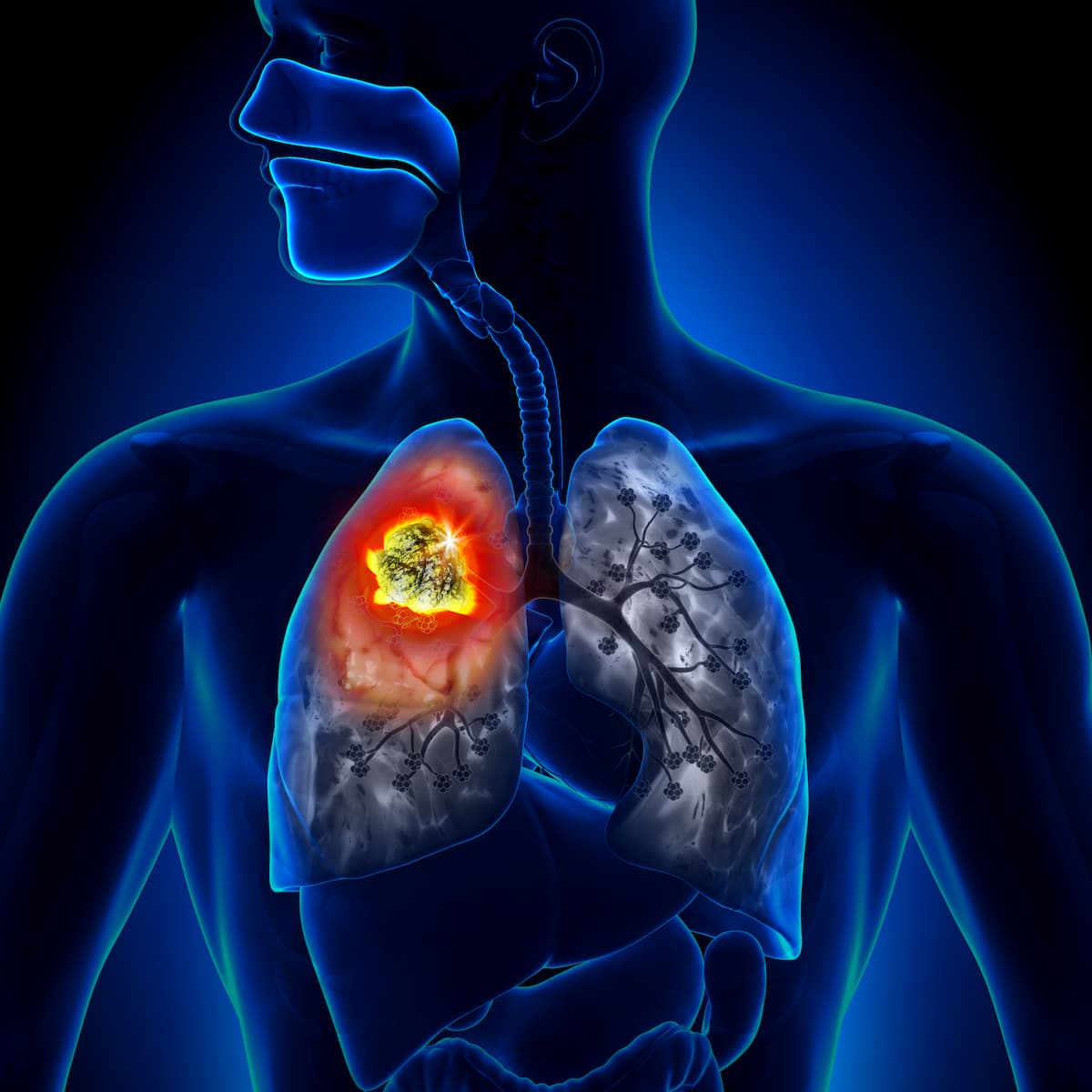Results from a retrospective study showed that chemoimmunotherapy did not prolong survival vs chemotherapy in a younger ES-SCLC population.
Chemoimmunotherapy may not confer a survival benefit and result in more immune-related adverse events (AEs) and hematologic toxicity compared with chemotherapy in younger patients with extensive-stage small cell lung cancer (ES-SCLC), according to results from a multicenter, retrospective study shared in BMC Cancer.
Overall, with a median follow-up of 13.7 months, the median progression-free survival (PFS) was 4.67 months in the younger group and 5.40 months in the control group (P <.001); the median overall survival (OS) was 13.70 months vs 14.37 months, respectively (P = .028).
In the group of patients who received chemoimmunotherapy, the median PFS was 4.50 months in the younger group vs 5.57 months in the control group (P = .002); the median OS was 13.20 months vs 15.33 months (P = .012). The overall response rate (ORR) was 68.97% in the younger group vs 78.70% in the control group (P = .271), showing a nonsignificant difference. The disease control rate (DCR) was 96.55% in the young group, with 0 complete responses (CRs), 20 partial responses (PRs), 8 instances of stable disease, and 1 instance of progressive disease.
In the patients who received chemotherapy, the median PFS was 4.75 months vs 5.37 months in the younger group and control group, respectively, showing no significant difference (P = .082); the median OS was 13.70 months vs 13.73 months, also showing no significant difference (P = .407). The ORR was 60.0% in the younger group vs 80.0% in the control group (P = .016). The DCR was 96.67% in the younger group, with 0 CRs, 18 PRs, 11 instances of stable disease, and 1 instance of progressive disease.
No statistically significant difference was observed regarding ORR and DCR between the young chemoimmunotherapy and chemotherapy groups. Kaplan-Meier survival analyses revealed no significant differences in PFS or OS between the young chemoimmunotherapy and chemotherapy groups either: 4.50 months vs 4.75 months for PFS (P = .501), and 13.20 months vs 13.70 months for OS (P = .508).
In a univariate analysis considering all patients who received chemoimmunotherapy, the factors negatively associated with PFS were younger age (HR, 0.511; 95% CI, 0.333-0.784; P = .002) and liver metastases (HR, 1.629; 95% CI, 1.132-2.343; P = .009); for OS, age stratification (HR, 0.556; 95% CI, 0.349-0.885; P = .013), liver metastases (HR, 1.932; 95% CI, 1.281-2.915; P = .002), and radiotherapy (HR, 0.440; 95% CI, 0.291-0.665; P <.001) were significantly associated factors.
Separate Cox proportional hazards regression analyses, in the young group, demonstrated that radiotherapy was the only factor that significantly correlated with PFS and OS; univariate analyses revealed that radiotherapy improved PFS (HR, 0.496; 95% CI, 0.286–0.859; P = .012) and OS (HR, 0.207; 95% CI, 0.104–0.411; P <.001).
“Young patients with ES-SCLC exhibited poorer survival outcomes, with shorter PFS and OS compared to the control group,” wrote lead study author Lijuan Zhao, of the Senior Department of Oncology at The Fifth Medical Center of PLA General Hospital in Beijing, China, and the Graduate School of Chinese PLA General Hospital, with coauthors in the publication. “Chemoimmunotherapy may not demonstrate a survival advantage in young patients, as evidenced by similar PFS and OS outcomes compared to chemotherapy.”
The retrospective analysis included 347 patients with ES-SCLC, of whom 210 received chemotherapy and 137 received chemoimmunotherapy. Patients were further broken into a young group (n = 59), consisting of patients 45 years or younger, and a control group (n = 288), consisting of patients older than 45 and 75 years or younger. Chemotherapy consisted of etoposide and platinum-based drugs; when indicated, immune checkpoint inhibitors (ICIs) were added to therapy.
Eligible patients were 18 years to 75 years old with pathologically or cytologically confirmed ES-SCLC without prior systemic treatment, an ECOG performance status of 0 or 1, and at least 1 measurable lesion per RECIST v1.1 guidelines. Among the reasons for exclusion were limited-stage SCLC, previous platinum-free chemotherapy, and combined disease with non–SCLC.
Trial end points were PFS, OS, safety, and responses among the different age groups.
In the younger group, the median patient age was 40 years (IQR, 37.0-42.0) in the chemoimmunotherapy group and 39.5 years (IQR, 36.3-42.0) in the chemotherapy group; in the control group, it was 62 years (IQR, 57.0-68.0) and 62 years (IQR, 56.0-67.3). The majority of patients in all groups were male, had an ECOG performance status of 0, and had prior smoking history.
Immunotherapy was anti–PD-1 drugs in 51.7% of the younger group and 33.3% of the older group, and anti–PD-L1 drugs in 48.3% and 66.7%. The most common chemotherapy regimen was etoposide plus carboplatin, except for in the younger chemotherapy group, where it was etoposide plus cisplatin.
Regarding safety, 86.44% of the younger group and 82.97% of the control group experienced a treatment-related AE (TRAE). The most common AEs were hematologic toxicity and gastrointestinal toxicity; the younger group had a higher incidence of thrombocytopenia (25.42% vs 14.24%; P = .033). Immune-related AEs occurred in 30.51% of the younger group and 11.46% of the control group (P <.001); they included pneumonitis (11.86% vs 2.43%; P = .003) and skin rash (11.86% vs 1.40%; P <.001).
“These findings suggest that chemoimmunotherapy may not be as effective in young patients with ES-SCLC and underline the need for tailored treatment strategies in this population,” the study authors concluded.
Reference
Zhao L, Xiong Q, Long Y, et al. Efficacy and safety of first-line chemoimmunotherapy in young patients with extensive-stage small cell lung cancer: a multicenter retrospective study. BMC Cancer. 2025;25(1):1136. doi:10.1186/s12885-025-14524-y
